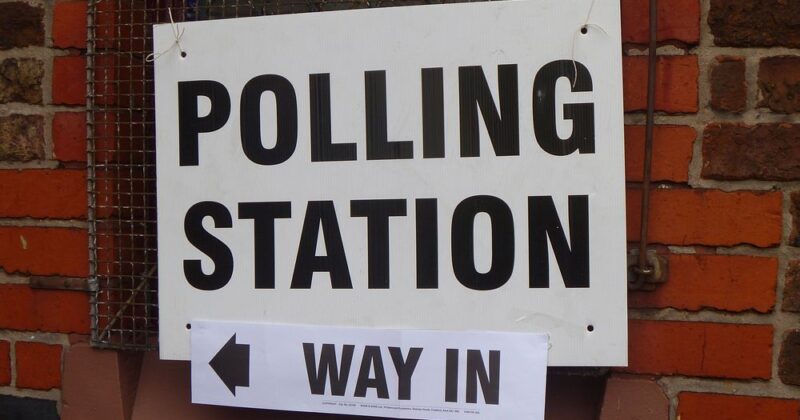Bolshevism and the fight for women's liberation
In this article Joy Macready examines the relatively unknown history of the Bolshevik’s ground-breaking policies for the liberation of women, which were subsequently reversed in the 1930s under Stalin.
The 1917 Bolshevik government advanced a revolutionary programme for women’s rights, struggling to break with the backwardness and prejudice of Russia.
The Bolsheviks argued that for women to be liberated, they would have to be relieved of their semi-slave status within the family. This would only happen if the state took on the major responsibilities for meeting people’s material needs and socialised housework and childcare.
Under these conditions, the family would ‘wither away’, and women would be free to participate in constructing socialism as equals with men.
Pre-revolutionary Position of Russian Women
Women’s situation in pre-revolutionary Russia was dire. The number of educated women was only a tiny fraction of the total population – the illiteracy rate for women was 92% in 1897.
Until 1914 a women was unable to take a job, get an education, receive a passport for work or residence, or execute a bill of exchange without her husband’s consent. A father had unconditional power over his children – but only those from a recognised union; men shared no responsibility for illegitimate children.
In the countryside, where 80% of the population lived, it was even more oppressive. A traditional peasant proverb summed up the general sentiment: A chicken is not a bird, and a baba is not a human being.
Peasant women were seen as property of the men: they had no rights within the dvor (household) or commune (mir), property rights, etc. They could not sell or buy cattle, tools or machines, rent or lease land, and all documents, taxes etc were in the man’s name.
Peasant women who escaped to the cities found that they were paid about half the wages of their male co-workers and that all skilled trades were closed to them. Outside of domestic service and the textile industry, marriage constituted grounds for immediate discharge.
Politically women were equals to men: neither men nor women had the right to vote. Men won the right to vote after the 1905 revolution; but while women petitioned for suffrage, they were denied until the 1917 provisional government after the February uprising. When the Bolsheviks came to power, they gave universal suffrage to women.
World War I
Russia’s entry into WWI brought changes to women’s position in the workplace – but did not alleviate their political, social and sexual oppression.
The number of women workers in industrial centres rose to over one million as 250,000 women joined the workforce between 1914 and 1917. Peasant women also took on new roles, taking over some of their husbands’ farm work.Women fought directly in the war in small numbers on the front lines, often disguised as men, and thousands more served as nurses.
Between 1913 and 1917 the percentage of women working in the metal trades in Petrograd rose from 3.2 per cent to 20.3 per cent. In the woodworking industries, the number of women increased sevenfold; in papermaking, printing and the preparation of animal products and foodstuffs, their number doubled.
This entrance of large numbers of Russian women into industrial production was a profoundly progressive step because it laid the basis for their economic and political organisation. It also led to them joining trade unions and becoming fighters for the revolution.
Working women’s role in the February Revolution was key. They were highly visible, gathering in a mass protest on International Women’s Day to call for bread and peace. On the morning of the 23 February 1917 a few hundred women textile workers assembled in their factories early and resolved to call a one-day political strike. They elected delegates and sent them around to neighbouring factories with appeals for support. By noon an estimated 90,000 workers had followed the working women out on strike.
It was the women that organised the strikes, flying pickets and pleaded with the soldiers to lay down their arms, which was crucial in toppling the tsarist regime.
Later in the year, coinciding with the October Revolution itself, the First All-City Conference of Petrograd Working Women was organised by the journal Rabotnitsa (The Women Worker) and attended by 500 delegates elected by 80,000 working women. A major goal of the conference was to prepare non-party women for the coming uprising and to acquaint them with the Bolshevik programme, which the new Soviet government would pursue after victory. At the conference the women discussed various questions of government and worked out plans for the welfare of mothers.
The conference was temporarily interrupted by the outbreak of the armed uprising. The delegates recessed in order to participate in the revolutionary struggle along with many other working women who bore arms, dug entrenchments, stood guard and nursed the wounded. Soviet women were members of Red Guard units from the first days of the October Revolution, and they fought side by side with men on every front during the Civil War.
Just after the October Revolution, Lenin said:
“In Petrograd, here in Moscow, in cities and industrial centres, and out in the country, proletarian women have stood the test magnificently in the revolution. Without them we should not have won, or just barely won. That is my view. How brave they were, how brave they still are! Just imagine all the sufferings and privations that they bear. And they hold out because they want freedom, communism. Yes, indeed, our proletarian women are magnificent class warriors. They deserve admiration and love….”
Because of the critical role working class women played in the revolution, the Bolsheviks took conscious steps to organise them and fight against their oppression.
This conscious effort pre-dates the 1917 revolution. As early as 1899 Lenin insisted that Clause 9 of the first draft programme of the Russian Social Democratic Labour Party (RSDLP) contain the words: “establishment of complete equality of rights between men and women.” The programme adopted by the Second Congress of the RSDLP in 1903 included this demand as well as the following special provisions:
“With a view to safeguarding the working class from physical and moral degeneration, and also with the view to promoting its capacity for waging a struggle for liberation, women should not be employed in industries harmful to the female organism, they should receive four weeks’ paid pre-natal and six weeks’ post-natal leave; all enterprises employing women should have nurseries for babies and small children, nursing mothers should be allowed to leave their work for at least half an hour at intervals of not longer than three hours, and male factory inspectors should be replaced by women in industries with a female labour force.”
Throughout the entire pre-revolutionary period the Bolsheviks pressed their demands for complete sexual equality as they carried out educational and organisational work among women through every possible vehicle: cultural and educational organisations, evening schools, trade unions, etc. Centres of Bolshevik agitation and propaganda also took the form of women’s clubs. In 1907, such a club was opened in St. Petersburg under the name “The Working Women’s Mutual Aid Society”, while in Moscow a similar club was called “The Third Women’s Club”.
Lenin was well aware and a fierce opponent of sexism within the RSDLP. In an interview with Clara Zetkin of the German Social Democratic Party, he said:
“…Unfortunately it is still true to say of many of our comrades ‘scratch a Communist and find a Philistine.’ Of course you must scratch the sensitive spot, their mentality as regards women. Could there be a more damning proof of this than the calm acquiescence of men who see how women grow worn out in petty, monotonous household work, their strength and time dissipated and wasted, their minds growing narrow and stale, their hearts beating slowly, their will weakened? Of course, I am not speaking of the ladies of the bourgeoisie who shove onto servants the responsibilities for all household work, including the care of children. What I am saying applies to the overwhelming majority of women, to the wives of workers and to those who stand all day in a factory.
“So few men – even among the proletariat – realise how much effort and trouble they could save women, even quite do away with, if they were to lend a hand in ‘women’s work’. But no, that is contrary to the ‘right and dignity of a man’. They want their peace and comfort. The home life of the woman is a daily sacrifice to a thousand unimportant trivialities. The old master-right of the man still lives in secret… Our Communist work among the women, our political work, embraces a great deal of educational work among men. We must root out the old ‘master’ idea to its last and smallest trace. In the Party and among the masses. That is one of our political tasks, just as it is the urgently necessary task of forming a staff of men and women well trained in theory and practice, to carry on Party activity among working women.”
Marxist Understanding of Women’s Oppression
The Bolshevik programme for women’s liberation was based on a Marxist analysis of women’s oppression, first theorised by Fredrick Engels. He was the first to establish that women’s oppression was linked to the development of class society in his seminal work ‘The Origin of the Family, Private Property and the State’ (1884). He located the origin of the oppressive family structure with the beginnings of private property and the division of society into classes.
In pre-class societies, there had been a sexual division of labour, but this had not led to the systematic oppression of women. The absence of a surplus and the need to survive imposed a certain egalitarianism on these societies, usually described as primitive communism. However, once a surplus was established, and ownership and inheritance of property became an issue, this was the start of class society, while a ruling elite controlled the distribution and disposal of the goods produced by the whole community. From this developed the monogamous family, where a women’s reproduction had to be controlled and heritage lines ensured to be able to pass property down through the patriarchal lines.
With the rise of the family came also a change in the nature of domestic labour. It was no longer a social function, but a private service, with the woman as domestic slave, excluded from social production, economically dependent on the man, and condemned to monogamy.
Engels grasped the contradiction between capitalist production and family stability – the family was more than a set of natural or biological relations but took a social form the corresponded to the mode of production.
Women are the first form of private property – and women’s emancipation depended on the abolition of private property and the creation of a communal domestic economy.
But Engels also argued that capitalism created the possibility for women’s liberation, by once again involving women in social production; the contradiction of private domestic service and the increased involvement of women in production could not be resolved under capitalism. Capitalism created the preconditions for women’s liberation but giving women their economic independence but only socialism could create a new family form that properly corresponded to women’s new role.
Bolshevik Programme for Women’s Liberation
Legislation
The Bolshevik programme to free women from their domestic drudgery and bring into the Party as activists was based on four primary precepts:
- Free union
- Women’s emancipation through wage labour
- Socialisation of housework
- Withering away of the family
A number of laws were introduced immediately after 1917 that gave women equality in the legal sense and also in the workplace – equal wages was first item on the list.
In December 1917 illegitimacy was abolished in law, making fathers – whether married or not – co-responsible for their children and freeing mothers from the burden of a double standard which had punished them for the consequences of shared “mistakes”.
The Bolsheviks established a range of far-reaching reforms, specifically the 1918 Family Code, which established civil marriages (to reduce the power of the church) and simple divorce on demand (which could be requested by either partner). The Code was followed in 1920 by the legalisation of abortion, which was also free on demand. Directly after the decree there was a mass wave in divorces as unhappy pairs took the opportunity to relieve themselves of their other half.
Alexander Goikhbarg, drafter of the Code, believed that the fetters of husband and wife would become obsolete. Although women had entered workforce they were still responsible for child rearing, cooking, cleaning, sewing, mending – the mindless drudgery of housework essential to the family. This work would be taken over by paid workers in communal dining rooms, laundries and childcare centres. Women would be free to enter the public sphere on an equal basis as men. They would be equally educated, waged and be able to pursue own individual goal and development. Goikhbarg believed that free union would gradually replace marriage, and this was a view shared by many Bolsheviks.
Russian revolutionary Alexandra Kollantai said: “The family – deprived of all its economic tasks, not holding responsibility for a new generation, no longer providing women with the basic source of their existence – ceases to be a family. It narrows and is transformed into a union of the marital pair.”
The Bolsheviks believed that the abolition of the family rather than the gender conflict within it held the key to women’s emancipation. Importantly, with communal kitchens and laundries, the Bolsheviks did not challenge men to share in women’s work but sought to transfer it into the public domain.
The Code was the most progressive family legislation the world had ever seen – it abolished the inferior legal standing of women and created equality under the law. However, the Bolsheviks were well aware that this was not a socialist legislation but legislation of the transitional time. They knew that they law alone could not liberate women but the first steps they took were to eliminate antiquated family laws. They believed that law, like the state, would wither away. There was tension and heated debate within the Party as to how fast this could happen.
Between 1923 and 1925 the Family Code was redrafted several times, and publicly debated in a manner which law makers today would find unfathomable.
In addition, the Bolsheviks aimed to revolutionise the peasant existence by passing the Land Code. The peasant social structure consisted of the dvor and mir and the family constituted the basic production unit.
The Land Code abolished private ownership of land, water, forests, minerals, and placed all the land in hand of the state. It recognised the role of commune in distributing land through all citizens regardless of age, sex, religion or nationality; all had the right to use the land and to participate fully in the skhod (decision-making body of the mir). This was enlarged to include all adult members of commune regardless of sex, so everyone could vote. Under the Land Code, women could be household heads.
Women’s organisations
In addition to legislation, the Bolsheviks set up the Zhenotdel, or Women’s Section of the Central Committee of the Communist Party.
Bolshevik leaders Inessa Armand and Konkordiia Samoilova argued that the party needed “to organise from among the most active working women of the party special groups for propaganda and agitation among women in order to put the idea of communism into practice.”
Kollontai, Armand, Nadezhda Krupskaya, Samoilova, Klavdia Nikolayeva, and Zlata Lilina organised the First National Congress of Women Workers and Peasants. They argued that they sought not to separate women’s issues from men’s but rather to weld and forge women and men into the larger socialist liberation movement.
One reason motivating Kollontai in particular was a fear that if the Bolshevik Party did not organise an effective women’s movement, Russian women living under conditions of war and deprivation might well be drawn into the remnants of the pre-revolutionary feminist or Menshevik movements. Many Bolsheviks knew that if they did not recruit women into the official party, women’s backwardness would make them easy targets for counterrevolutionary forces. Finally, the early party-state desperately needed to mobilise every woman and man to support the Red Army in the Civil War.
The Zhenotdel made significant gains in the area of organisation-building during the period from 1919 to 1923. Often working in special interdepartmental commissions, they established relations with the Maternity and Infant Section (OMM) of the Commissariat of Health, as well as with the Commissariats of Education, Labour, Social Welfare, and Internal Affairs. They addressed issues of abortion and motherhood, prostitution, childcare, labour conscription, female unemployment, labour regulation, and famine relief. They argued vehemently with the trade unions that there should be special attention to female workers.
Under the leadership of Kollontai, the Zhenotdel spread the news of the revolution, enforced its laws, set up political education and literacy classes for working-class and peasant women.
The Zhenotdel offered women practical political experience. In annual elections women chose their delegates – one for every 10 working women or for every hundred peasant women or housewives. These delegates attended classes in reading and writing, government, women’s rights and social welfare, and they took part in the organisation of conferences, meetings and interviews designed to arouse the interest of their constituents and draw them into political activity. They were entitled to representation on the Central Committee of the Bolshevik Party, and those who were elected to represent Zhenotdel pursued a special programme of political education, which included reviewing the reports of district committees, co-ops, trade unions and factory directors.
The Zhenotdel also carried out propaganda campaigns through its publications. By 1921, it was publishing a special page devoted to women in 74 weekly newspapers. In addition, it published its own weekly bulletin and the monthly journal Kommunistka (The Communist Woman), which had a circulation of 30,000. In addition, Zhenotdel’s literary commission supervised the publication of leaflets and pamphlets dealing with party work among women – over 400,000 pieces of literature during the first six months of 1921 alone.
They also set up co-operative workshops for women, organised women who had been laid off from factories and established orphanages and colonies for homeless children.
Within a few years Zhenotdel had succeeded in creating out of the most backward sector of the working class and peasantry an organised, active, politically conscious stratum of women citizens supporting the Soviet republic.
Years of Civil War and Reaction
The Bolsheviks were only partially successful in getting their visionary programme implemented. The civil war, 1921 famine and the introduction of the New Economic Policy (NEP) and controlled market forces, combined with the backwardness of Russia’s economy and its overwhelmingly peasant population, meant that their ambitious reform programme was slow in implementation.
After the civil war four million men returned to their homes; there were massive layoffs due to industrial cutbacks. Women accounted for 60% of the unemployed and during this period almost 280,000 women left the workforce. This was combined with a deadly famine in 1921, which affected 25 million and left millions of starving orphans.
With the introduction of the NEP in 1921, Zhenotdel activists faced a new problems: rising and disproportionately female unemployment; cutbacks in budgeting for local party committees which prompted them to try to liquidate their women’s sections altogether; and cutbacks in the social services (childcare, communal kitchens, etc).
The NEP policies often prompted managers to fire women and replace them with men, as women were considered more costly to employ. Although the Bolsheviks issued decrees against discrimination of women at work, these had little effect on the sexist practise of factory managers. The cutbacks had the effect of shifting women away from heavy industry and back into traditional roles/jobs they held before the war.
There was also an increase in prostitution. As Krupskaya wrote: “Poverty compels women to sell themselves. They are not prostitutes who make an enterprise out of this, but mothers of families.”
The state retreated from socialised child rearing and reversed the prohibition against adoption 1926, so that older children from the orphanages were placed with peasant families as agricultural workers, opening new places for younger orphans. The Bolsheviks had abolished adoption in 1918 so that peasants couldn’t use children for slave labour.
Free union could not be taken advantage of by women as marriage frequently represented a form of security and survival for mothers, unskilled and illiterate. The material conditions during the civil war and afterwards did not foster free union, particularly in the countryside where the woman was still very much tied to the dvor.
However, the reversal in Soviet family policy by the mid-1930s was not primarily the result of Russia’s backward economy, or the lack of state facilities. The turnabout was primarily due to the ideological shift, which went hand-in-hand with Stalin’s reactionary policies in other areas.
In 1936, abortion was outlawed, divorce went back to the courts and the family unit was reformed. The forced march to creating a new industrialised Soviet Union required workers, and women were encouraged to reproduce. Official policy told the “worker-mother” to accept her double burden for the sake of mother Russia.
Conclusion
The Bolsheviks envisioned a society in which communal dining halls, childcare centres and public laundries would replace the unpaid labour of women in the home. Freed from their domestic burden, women would achieve equality with men. Mutual affection and respect would replace legal and economic dependence as the basis for relations between the sexes. They were the first to legalise abortion in 1920 and made available to women free of charge.
This was a conscious effort to liberate women – and the new laws reflected the aim of the withering away of the family. Many of these gains that were made – such as equal pay – have never been attained in ‘democratic’ society even though they are enacted in law. It would be interesting to discuss what the main demands would be today for women’s liberation and how much it would overlap with the programme the Bolsheviks advanced. In fact the vast majority of their programme would be still be valid today. For all the claims by the ruling class, women have not achieved the level of freedom they had in 1918 in Russia.




